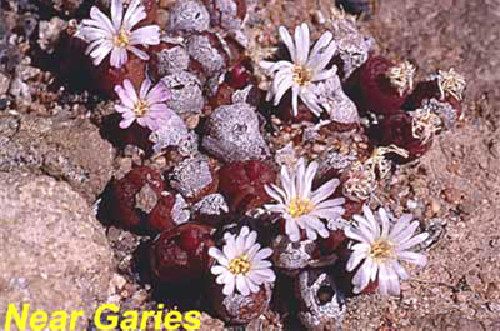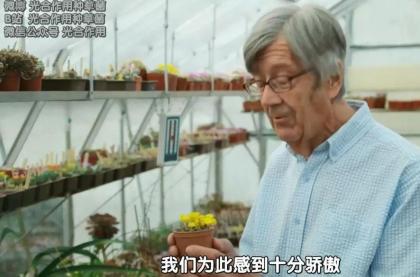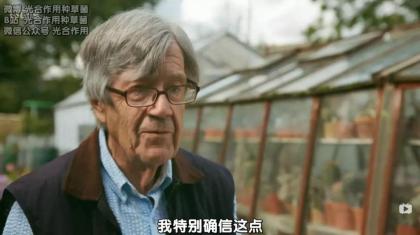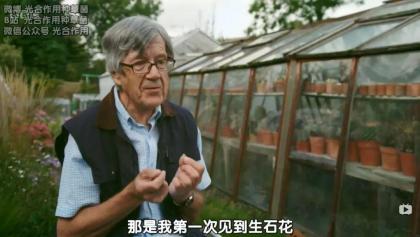本文原著Terry Smale,英国资深爱好者(已于2021年2月17日去世)。TS先生一生献身肉锥植物的研究和知识传播,转载此文是为了将他的知识与各位爱好者共享,更是表达对他的尊敬。
Terry Smale, a veteran British fan, died on February 17, 2021. Mr. Smale devoted his whole life to the research and knowledge dissemination of sarcocarpus. This article is reproduced to share his knowledge with all lovers and show his respect.
本文为承接上文《THE DIFFICULT CONOPHYTUMS:Conophytum rugosum 》的内容,该文地址请点击=》链接 连贯观看会更好
以下为原文:

Conophytum roodiae is also widespread on the Namaqualand eroded gneiss formations and in common with most widespread plant species, it shows much variation. It is the large-flowered, self-sterile sister of C. rugosum. Most ecotypes of the species are quite growable although they do suffer from the same problem as C. rugosum in that some heads fail to resurrect in the autumn and that frequent separation of heads is needed. However, in the south-west corner of its distribution, to the south of Garies, there is a very special population that when it was first discovered was known as the “red pea”. These grow in grit pockets in gneiss rock that is barely raised above the level of the surrounding vegetation and as the same suggests they have quite rich-red bodies when they first emerge in the autumn in the wild. This element was given the name C. roodiae subsp. sanguineum in recognition of its bloody colouration, but in cultivation in the UK the red colour is usually not so well developed. A few kilometres to the east, near Hoedberg, there are more populations of well-pigmented C. roodiae but these are brown-purple rather than red and with a more rugose epidermis. I would personally include these in subsp. sanguineum rather than subsp. roodiae but I suspect that other authors would not. Steven Hammer provided me with seeds of the “red pea” around the time he described it in 1990 but I found them very difficult to germinate. Adult plants are even more prone than the typical subspecies to die-back during the resting period and I eventually lost them. In the mid-noughties, I got more seed from Steve and this germinated fairly well and I have been able to maintain some plants and even produce a few seedlings from them. I think that there has been unnatural selection at the Sphaeroid Institute in that propagating plants by seed in cultivation over several generations has produced a strain that has self-selected for easier cultivation. So I am now optimistic that this attractive plant will become more common in our collections in the future.
Conophytum roodiae(鲁提辖)也广泛分布在Namaqualand侵蚀片麻岩地层上,与大多数广泛分布的植物物种一样,它表现出很大的差异。它是大花的,和他的的姐妹C.rugosum(海参)一样无法自花繁殖。大多数生态型的物种是相当可生长的,虽然他们遭受同样的问题,因为一些头不能复活在秋季和频繁分离头是必要的。然而,在其分布的西南角,加里斯以南,有一个非常特殊的种群,当它被首次发现时,被称为“红豌豆”。它们生长在片麻岩岩石中的砂砾中,片麻岩岩石几乎没有高出周围植被的水平面,这同样表明它们在秋天首次出现在野外时有着非常丰富的红色体。这一群体因为它的血红色被命名为C. roodiae subsp. sanguineum ,但在英国的种植中,红色通常不那么发达。在东面几公里的霍德伯格(Hoedber)附近,有更多的色素丰富的C. roodiae,但这些是棕紫色而不是红色,表皮更具皱纹。我个人会把这些写进subsp.sanguineum而不是subsp.roodiae。但我怀疑其他作者不会。史蒂文·哈默(Steven Hammer)在1990年描述“红豌豆”(red pea)的时候给了我种子,但我发现它们很难发芽。成年植物甚至比典型的亚种更容易在休眠期死亡,我最终失去了它们。在二十世纪中叶,我从史蒂夫那里得到了更多的种子,这些种子发芽得相当好,我已经能够保持一些植物,甚至从它们身上长出一些幼苗。我认为在Sphaeroid研究所有一种非自然的选择,即通过种子繁殖植物,经过几代的栽培,产生了一种自我选择的菌株,以便于栽培。因此,我现在乐观地认为,这种有吸引力的植物将成为我们的收藏在未来更普遍。
再以此文纪念TS先生



原文地址《TS文章系列 Conophytum roodiae ssp. sanguineum (鲁提辖)》
发表评论